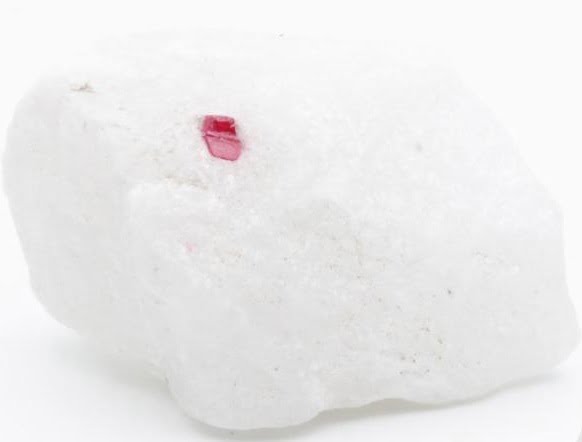Spinel in Marble: The Little Red Dot
Throughout the history of gemstones, red stones dominated the culture of the ancient world. For them, red gems symbolise blood, power, fire, and beauty. Greed, the force behind the desire to obtain them all in one’s hand, lies in a red stone: ruby… or spinel?
Perhaps the most confused gem of all times, the spinel has been worshipped for mistakenly thought to being ruby for ages. A doppelganger or sort, both have the same colour and source of origin. Spinel was used to be known as “balas ruby” for those reasons. To further understand “balas ruby”, we have to look at the origin of the term. Ruby and spinel were once mined in Badakhshan, now mostly Tajikistan and parts of northern Afghanistan. The odds of “balas” referring to Badakhshan are high since naming a mineral or gem after its origin is a custom.
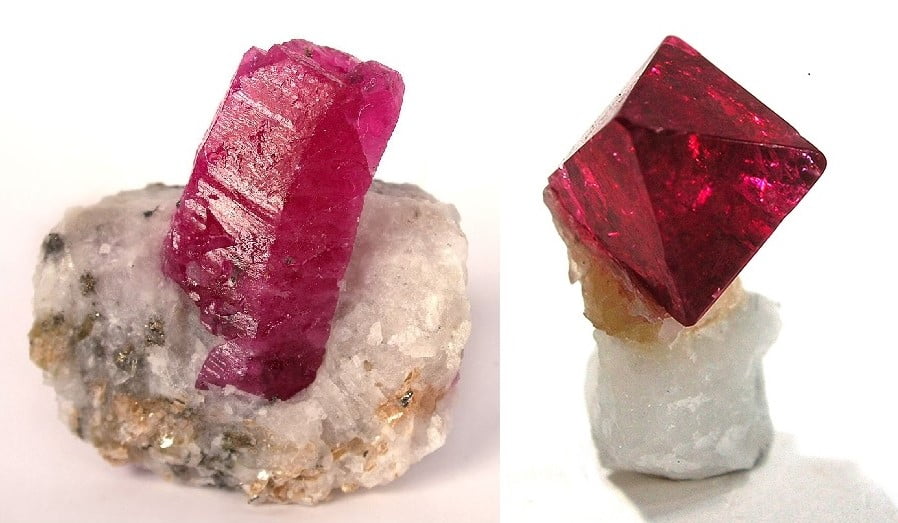
During that period, as early as the 1st century AD, lack of gemmological knowledge played a part in the mineral mixed-up. As a matter of fact, most red stones were called ruby or just simply red stone. To be fair, it is a forgivable mistake as the in-depth study of mineralogy began in the 16th century. In another locality, Burma also has been producing a fair amount of quality rubies and spinel for centuries. Through those mining experiences, they were the first to distinguish the two as different minerals. That knowledge did not reach Europe until the 18th century and then everything suddenly came to light.
Even though Europeans finally knew the two were separate minerals, the damage has been done. Many royal and significant jewels containing what thought to be ruby, were indeed spinel. Among the most famous ruby imposters are named the “Black Prince Ruby” and the “Timur Ruby”. These spinels had shouldered the fame of a ruby throughout their entire history and met with endless parade of significance, often due to their unusual size. The “Timur Ruby” was named after the Timur King, who once ruled Central Asia, in the 14th century. This stone was then passed down to his descendant who founded the Mughal Empire. It went through several more possessions before being set in a necklace in 1853 and ending its travels in the safekeeping of the British Empire.
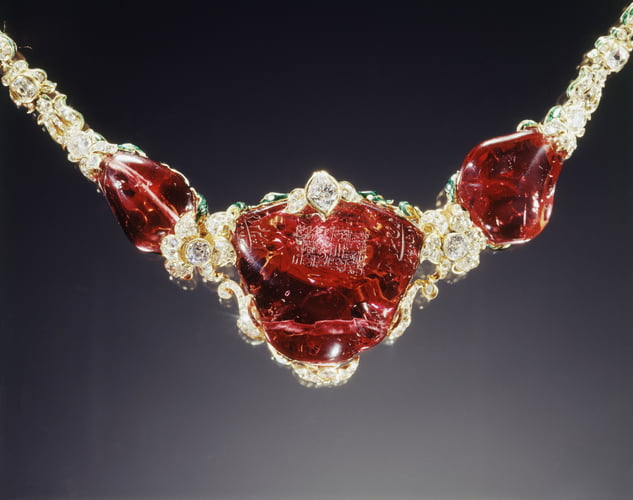
Unlike the “Timur Ruby”, the “Black Prince Ruby” got a lot more publicity despite being a small stone. It was named after Edward, the Duke of Cornwall, who is also known as “The Black Prince”. Prior to Edward claiming this gem, the stone served as a spoil of war. It had absconded, stolen, ceased for its entire timeline and was finally gifted to Edward as a token of indebtedness. It was kept for centuries before being set on the new Imperial State Crown in the 19th century along with the Cullinan II Diamond as seen today. Although the fact that it being a spinel rather than a ruby, its name is still unlikely to be changed to “Black Prince Spinel” or “Timur Spinel” anytime soon.
Modern day Tajikistan in a place called Kuh-I-Lal, is where most of the famous spinels were originally mined from. It is an ancient mine where it was first mentioned as early as the 1st century. This mountainous location also hosts many other gemstones such as rubies, which led to the confusion with spinel. Apart from Tajikistan, Myanmar is another source for spinel. Myanmar had been and still being an important source for ruby and spinel.
In gemmological sense, spinel has a chemical composition of magnesium aluminium oxide (MgAl2O4). Its composition may look similar to the corundum of aluminium oxide (Al2O3) but they are completely distinct minerals. Spinels are slightly softer at 8 of the Mohs hardness scale and lighter in specific gravity to ruby. And needless to say, both come in the colour red for which are obtained from trace elements of chromium. Ruby however, can only be red as other colours of corundum are labeled as fancy sapphires. Spinels are also found in shades of pink, purple, violet, blue, and grey.
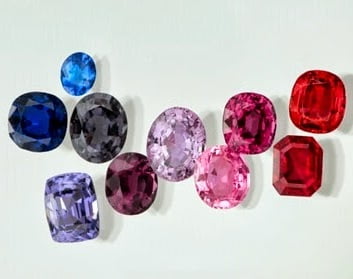
Furthermore, those red gems are often formed in metamorphic rocks of marble. In a pile of white marble, a gem is being highlighted by its dashing red hue. To determine the type of mineral, closer inspections are needed. The key feature of distinguishing spinel to ruby is its octahedral crystal shape. Belonging to the cubic crystal system, spinel often crystallised in an octahedral shape or a back-to-back pyramids habit, a truly recognisable crystal shape with six pointed tips.
With the science behind the then yet-to-be-named red mineral being dissected clearly, it was eventually given the name spinel, derived from a Latin word, “spinella” that was defined as little thorn. The name fits nicely for a mineral often formed in sharp octahedral crystal. Here at The Gem Museum Singapore, we fancy calling spinel in marble as “little red dot(s)” because it is coherent with the geography of Singapore for being a little country in a big world.
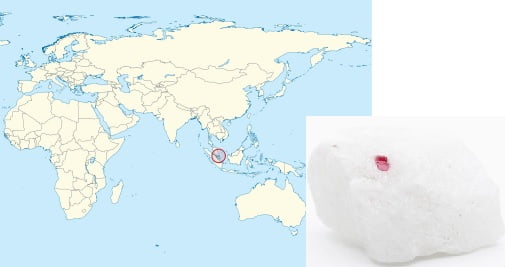
After the clouds of identity commotion have past, spinel suddenly found itself undesirable. People continued to seek and treasure rubies for its undisputed value and reputation. It took decades for spinel to escape ruby’s shadow, benefited from the increasing recognition of spinel and diminishing supply of fine rubies. Spinels have characteristics that bettered ruby in areas such as clarity, size, and colour diversity.
Even with those extra advantages over the ruby, spinel still is unable to compete in terms of value and price. In the new millennium, consumers are getting more financially conscious. Ruby may be for the rich, but spinels prove to be a viable alternative, even for pink diamonds. Spinel grew in popularity, not just among consumers but cutters, jewellers, collectors too. And deservedly, it was inducted as an August birthstone in 2016.
In the end, spinel is truly a magnificent gem that only until recently got the attention it was longing for. Available in vibrant colours, brilliant sparkle from a good cut, and affordable makes it a gem not to be taken lightly of.

